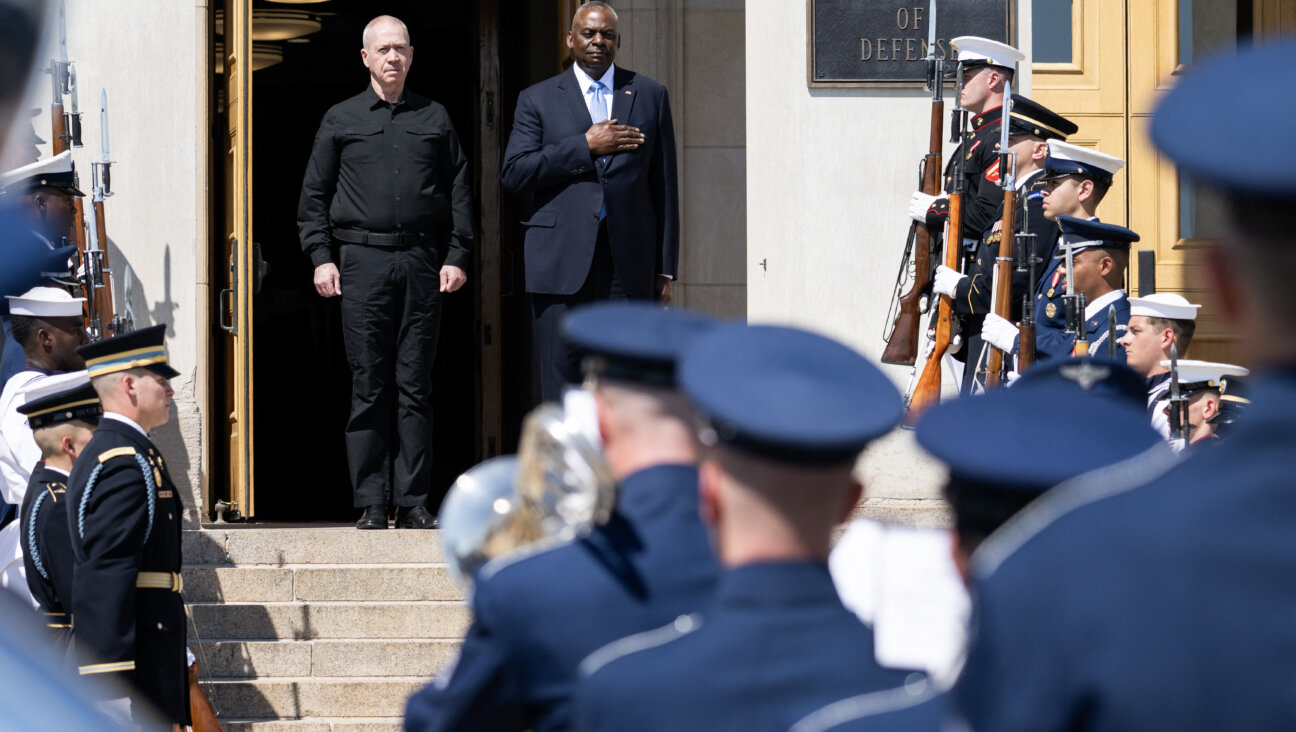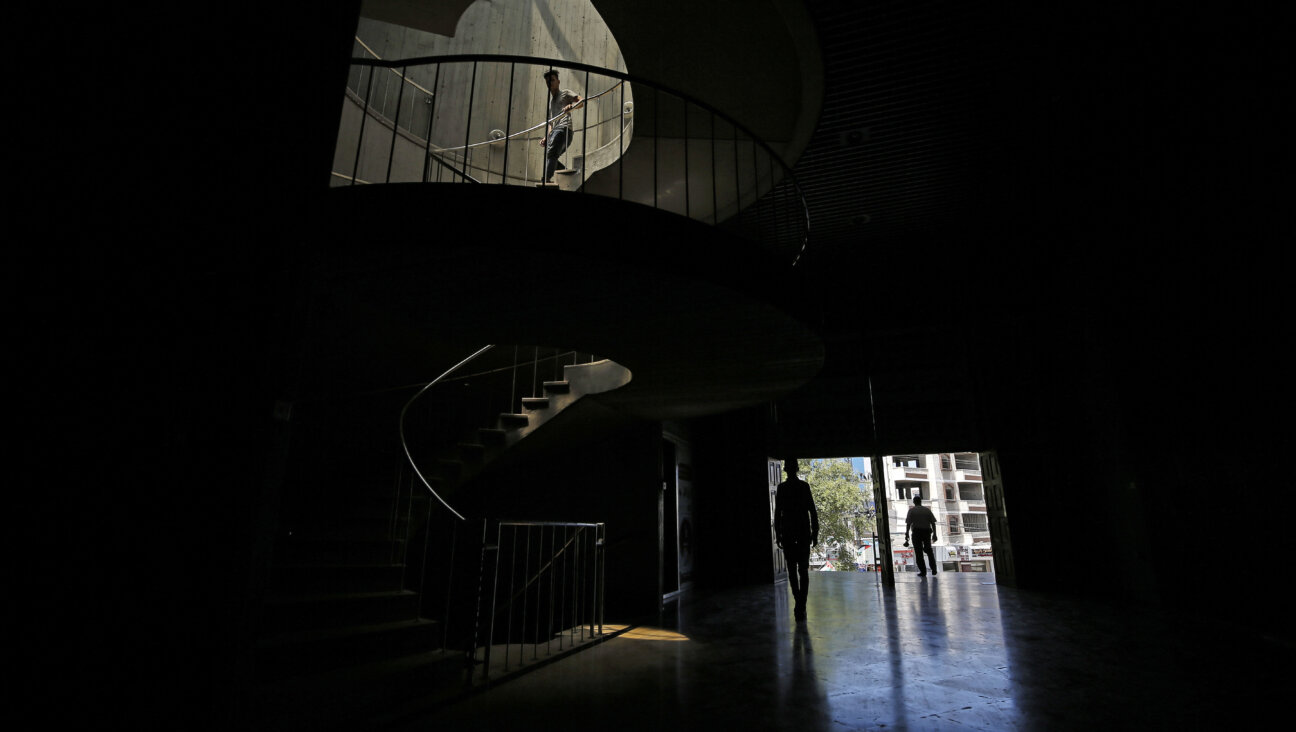One Man’s Quixotic Hunt for Sunken Nazi Treasure in Frigid Lake

History Sleuth: Yaron Svoray wants to get to the bottom ? literally ? of the story of the Nazi treasure in this German lake. Image by Maximilian Kiewel
It’s cold this winter morning at Stolpsee Lake. It’s February 2013, and ice is floating on the lake, an hour’s drive north of Berlin. Reeds and trees are covered in snow. Yaron Svoray, 60, stands on the lake’s shore, dressed in a thick winter jacket, looking thoughtfully over the water.
He has been waiting nearly six years for this moment. The former paratrooper in the Israeli Defense Forces and son of a German Jew pins his eyes on the dark water and optimistically says: “Today, we are going to find the treasure. I officially announce that we are going to solve the 70-years-old Stolpsee mystery.”
Only a few kilometers away, in the small town of Himmelpfort, Erich Köhler, 79, sits in his kitchen and smiles. He has been living in the area for 40 years, first as a priest in the former German Democratic Republic: now he’s a historian. “Svoray is just the latest guy trying to find the treasure,” Köhler says. “Maybe he’ll actually do it.”
Köhler has been researching the legend of the Stolpsee treasure for decades. Again and again he’s heard the story, about how of trucks rumbled to Crab Bay and how SS guards forced haggard female prisoners from the nearby Ravensbrück concentration camp to unload heavy boxes from the trucks. The SS guards were evidently in a hurry, knowing the Soviet Red Army was approaching Berlin,”Köhler says.
The prisoners hoisted the boxes into two inflatable boats, rowed to the center of the Stolpsee and threw them overboard, people told Köhler. When they were done, the exhausted inmates returned to the shore and were lined up. “People I spoke with remembered that water was dripping down from their stripy concentration camp uniforms,” says Köhler. “Then the prisoners were apparently all shot.”
Murdering the witnesses
The only thing for sure is that the legend of the Nazi treasure is hard to believe. A cloak-and-dagger operation during the last weeks of the Second World War? Mysterious boxes dumped in an icy lake close to Berlin?
Köhler feels the story is true but has his own theory about the boxes. While some believe the crates contained gold and platinum looted from Carinhall, Luftwaffe chief Hermann Goering’s nearby country home, Köhler thinks the Nazis were trying to dump files from Ravensbrück.
In support of that theory, Germany had thoroughly documented the Holocaust, but the paperwork for Ravensbrück is oddly scanty.
Yaron Svoray doesn’t care if the boxes (if there are any) contain precious metals or secret documents “It’s about the people the treasure belongs to. Whatever we find has to make its way to the survivors of the Holocaust,” he says.
‘Delicate missions’
The Israeli writer and former police investigator is well experienced in what he calls “delicate missions”. In the 1990s, he spent six months undercover with German neo-Nazis. A book based on his experiences, called “In Hitler’s Shadow” was made into an HBO movie in 1995 (“The Infiltrator”).
Since then, Svoray has dedicated himself to tracking down property stolen by the Nazis. Probably his biggest find was the recovery of 40 uncut Jewish-owned diamonds in a forest in Alsace, on the border between France and Germany.
And he is convinced there are boxes at the bottom of the lake, but many have tried their hand at solving the Stolpsee enigma. In September 1981, a dubious arms dealer told the Stasi – East German secret police – about Nazi gold in the lake and even presented an alleged treasure map. In a report, today lying in the Stasi archive in Berlin, one intelligence Lieutenant-Colonel Heilmann wrote: “On 27th September 1981, the contact person told the Main Reconnaissance Administration of the State Security Ministry, Section X, that he had obtained sketches alluding to the whereabouts of Hermann Göring’s treasure. These include: 3 boxes of precious metal (450 kilogram each).”
The Stasi swings into action
The report electrified the notorious Stasi chief Erich Mielke, who immediately ordered a covert dredging operation codenamed “Autumn Wind”. For six months, military divers and the pioneer unit of the Stasi guard battalion “F. E. Dzierzynski” trawled the water, but found nothing.
Their failure dismays Svoray not at all. Visibility in the lake is terrible, he points out and adds that the shallow lake, only 40 feet in depth, is full of World War II rubble and sludge. “There is no way the Stasi could have found the boxes in using dredgers and other primitive methods,” says the Israeli.
Svoray’s solution was to hire a professional British company in summer 2013 that scanned the lake, mapping meter after meter with the latest sonar technology. And this time, the mission isn’t top secret like the communist Germans’ effort. The Israeli researcher went up the official ladder, asking for permission and backing from the German government.
Switch to Tel Aviv, November 2013: Yaron Svoray is sitting in a room stuffed with maps, books, diagrams and old black-and-white photographs from World War II, watching sonar scans and three-dimensional images created by the British experts.
“Without giving away too much: We are extremely satisfied with the results,” he says, smiling. “We have located over a dozen possible targets that seem to have the right size, weight and position for what we are looking for.”
As the lake, it’s inaccessible during winter. Svoray plans to return to Germany next spring.
What would he do, if in the end he really found something? “Certainly, we would hand it over to the German government,” the Israeli says. Svoray still trusts the government, although German authorities have just been criticized for staying silent too long about Nazi-looted art works stashed in a recluse’s flat. “I am confident that the government is aware of the dwindling number of survivors and will make every effort to return whatever is found to the proper hands. So justice will be done.”
For more stories, go to Haaretz.com or to subscribe to Haaretz, click here and use the following promotional code for Forward readers: FWD13.
A message from our Publisher & CEO Rachel Fishman Feddersen

I hope you appreciated this article. Before you go, I’d like to ask you to please support the Forward’s award-winning, nonprofit journalism during this critical time.
We’ve set a goal to raise $260,000 by December 31. That’s an ambitious goal, but one that will give us the resources we need to invest in the high quality news, opinion, analysis and cultural coverage that isn’t available anywhere else.
If you feel inspired to make an impact, now is the time to give something back. Join us as a member at your most generous level.
— Rachel Fishman Feddersen, Publisher and CEO






















